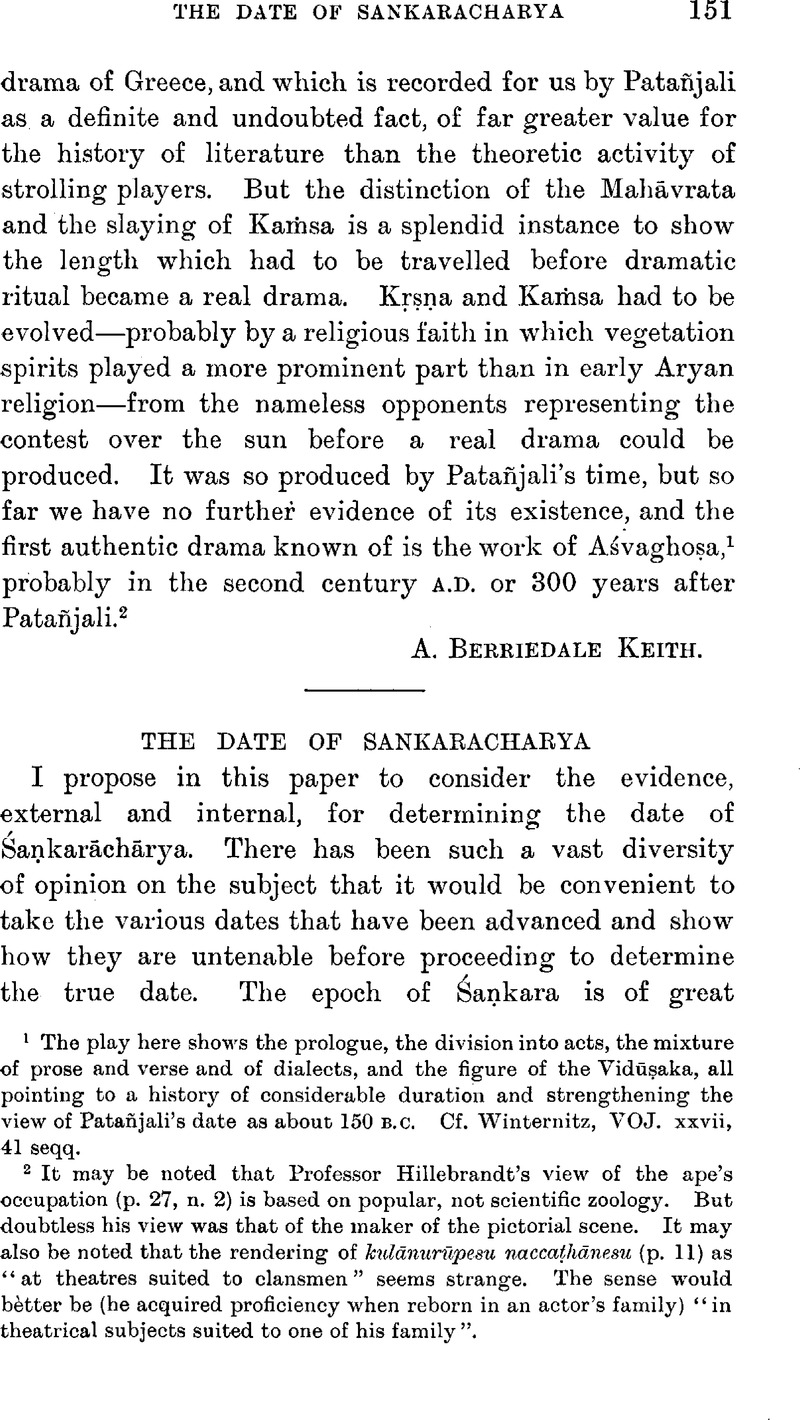No CrossRef data available.
Published online by Cambridge University Press: 15 March 2011

page 152 note 1 In books published by the Swāmi of the Dwāraka Matḥa (Guzarat) and by Mr. T. S. Narayaṇa Sastri, B.A., B.L., Madras.
page 152 note 2 Padmapāda says in the Panchapādika:
![]()
page 153 note 1 In the Taṇtra Vārtika, i, 3. 7:Google Scholar
![]()
See also Kumārila, 's Slōka Vārtika, Sutra ii, slokas 195, 196.Google Scholar
page 153 note 2 Vol. xiii, pp. 95 ff.
page 153 note 3 JASB., vol. lxiii, pt. i.Google Scholar
page 154 note 1 The order is:
![]() and
and ![]() . (See Siddhi traya, Benares edition, p. 5.)Google Scholar
. (See Siddhi traya, Benares edition, p. 5.)Google Scholar
page 154 note 2 
page 155 note 1 
The references are to famous Tamil saints. The ![]() is Siruttonḍa Nāyanār, who according to Periyapurāṇam sacrificed to Siva the head of his son Śirāla.
is Siruttonḍa Nāyanār, who according to Periyapurāṇam sacrificed to Siva the head of his son Śirāla.
page 155 note 2 Ind. Ant., vol. xi, p. 175Google Scholar. Telang identifies this work with the Aryavidyāsudhākara of Yajneśvara Sāstri.
page 156 note 1 e.g. ![]() (Sagdhi) = a feast,
(Sagdhi) = a feast, ![]() (Duṛghaṭam) = difficulty, etc.
(Duṛghaṭam) = difficulty, etc.
page 156 note 2 Ind. Ant. for 11, 1914.Google Scholar
page 156 note 3 Saṛvajna probably saw the closing years of the reign of Āditya I, as he refers to that king's conquests in the line:
![]()
page 157 note 1 See Buhler's Inscriptions of Nepal and Vamśavaḷi given in the appendix to that work.
page 157 note 2 In the Rājataraṇgiṇi (Stein's edition), book v, verses 128–227.
page 157 note 3 Mādhava has: ![]() i.e. the Sun, Mars, Saturn, and Jupiter were exalted and in Kendra. The anniversary is on Suida 5 of Mesha when the moon is in Ārdrā.
i.e. the Sun, Mars, Saturn, and Jupiter were exalted and in Kendra. The anniversary is on Suida 5 of Mesha when the moon is in Ārdrā.
page 158 note 1 ![]() (?).
(?).
page 159 note 1 See Appendix.
page 159 note 2 See the forthcoming volume of the Epigraphia Indica.
page 160 note 1 One of the hymn-makers in that collection is Sundaramūrti Nāyanār, who may be referred even to the ninth century. The Tamil Periyapurāṇam, which belongs to the twelfth or thirteenth century, mentions the fact that this Nayanar was a contemporary of Chēraman Perumal, the last of the rulers of United Kērala. The Perumal and the Nāyanār are said to have died about the same time in a miraculous fashion. There is evidence to believe with Mr. Logan that the Perumaḷ died about a.d. 825. (See Logan, 's Malabar, vol. i, 256.)Google Scholar